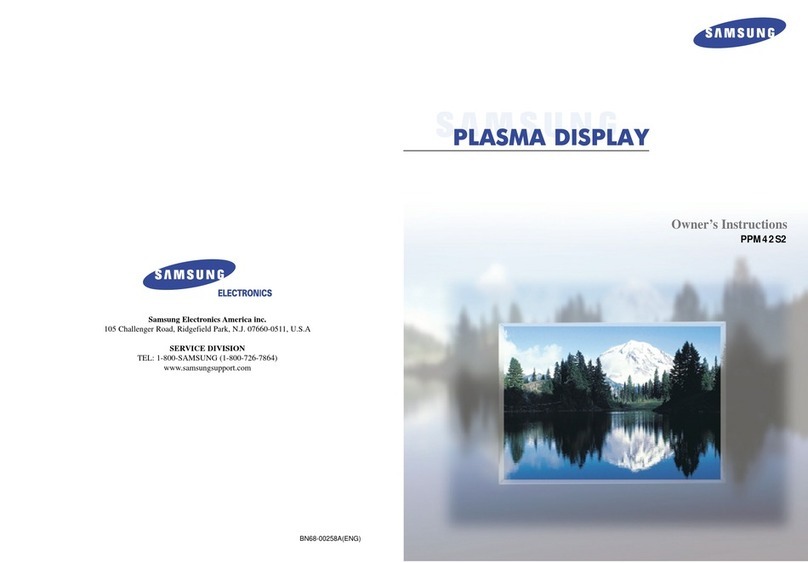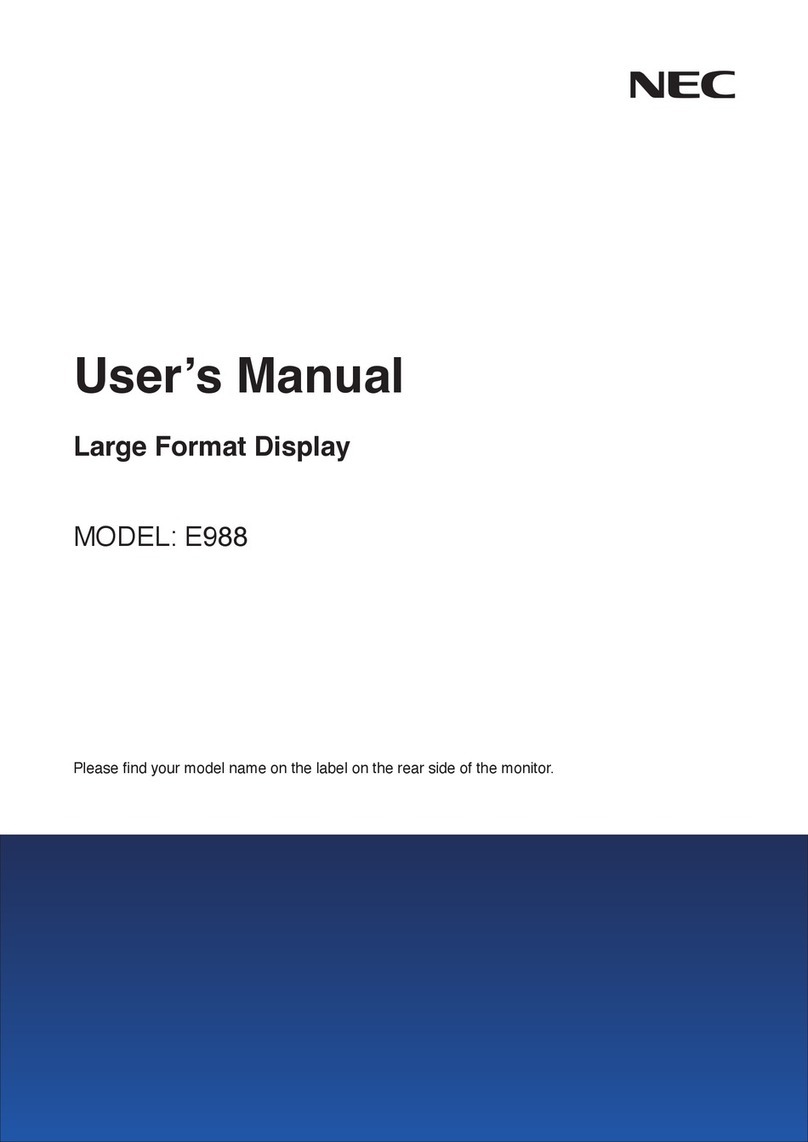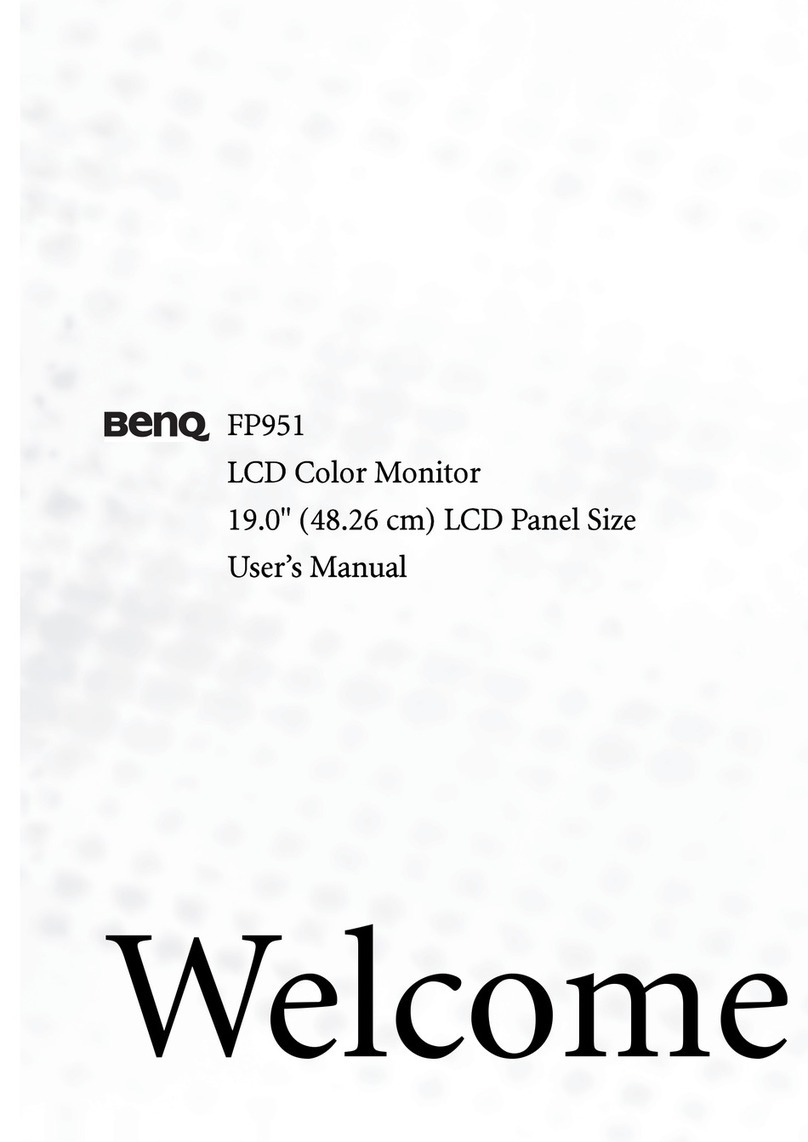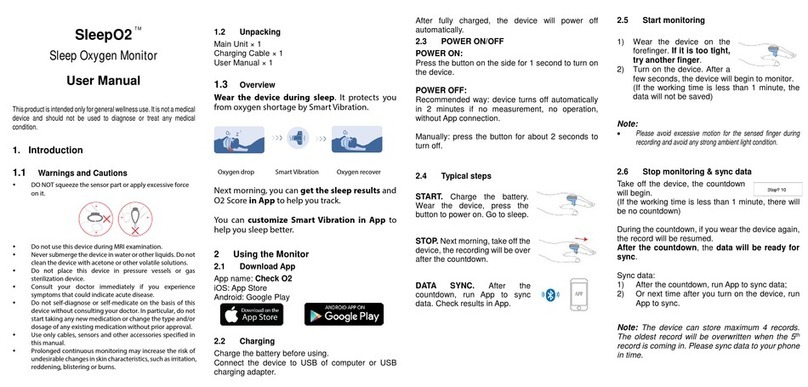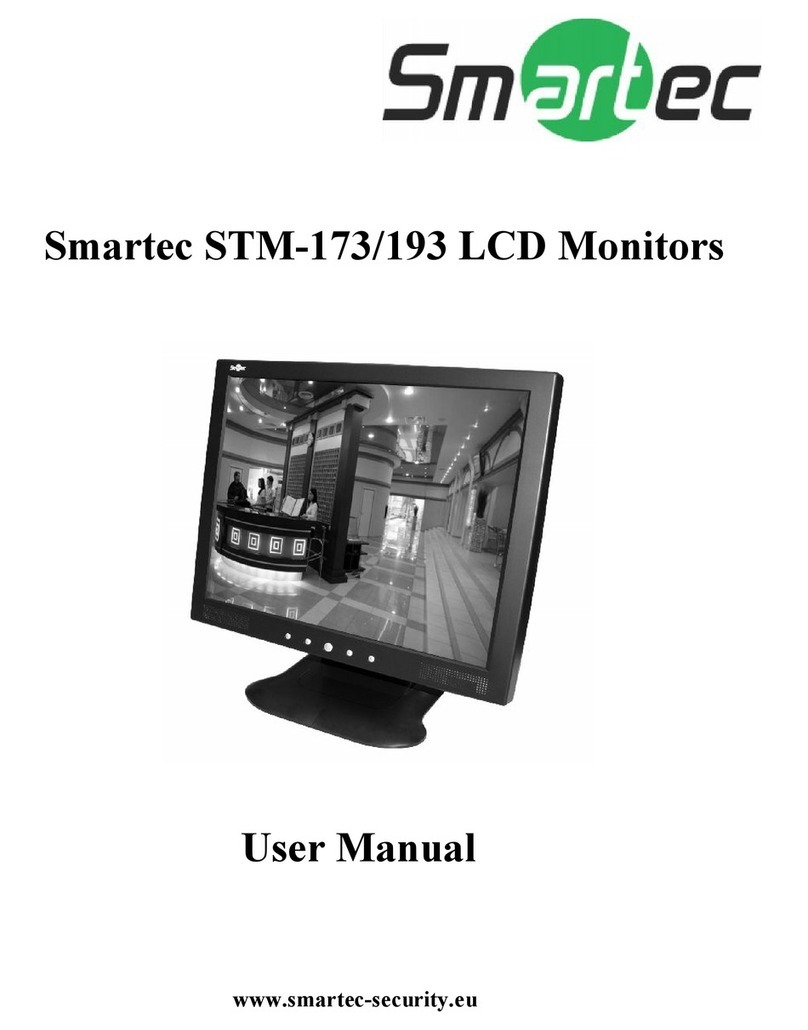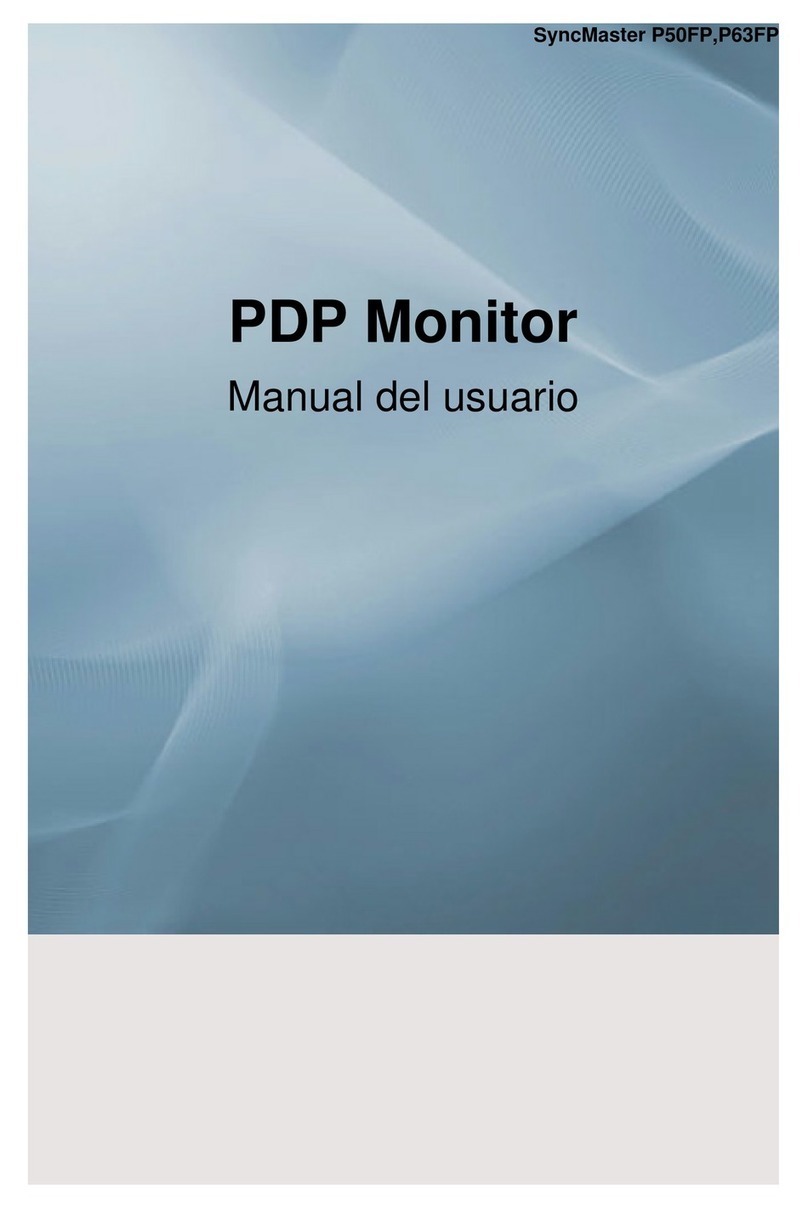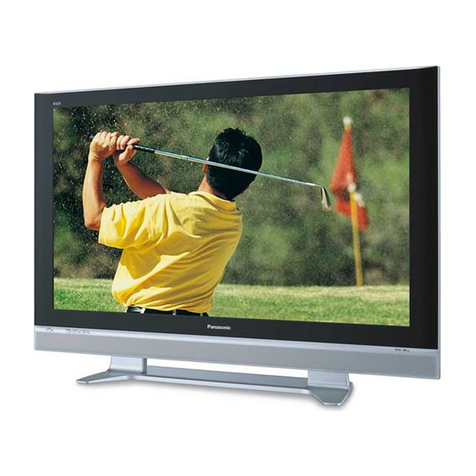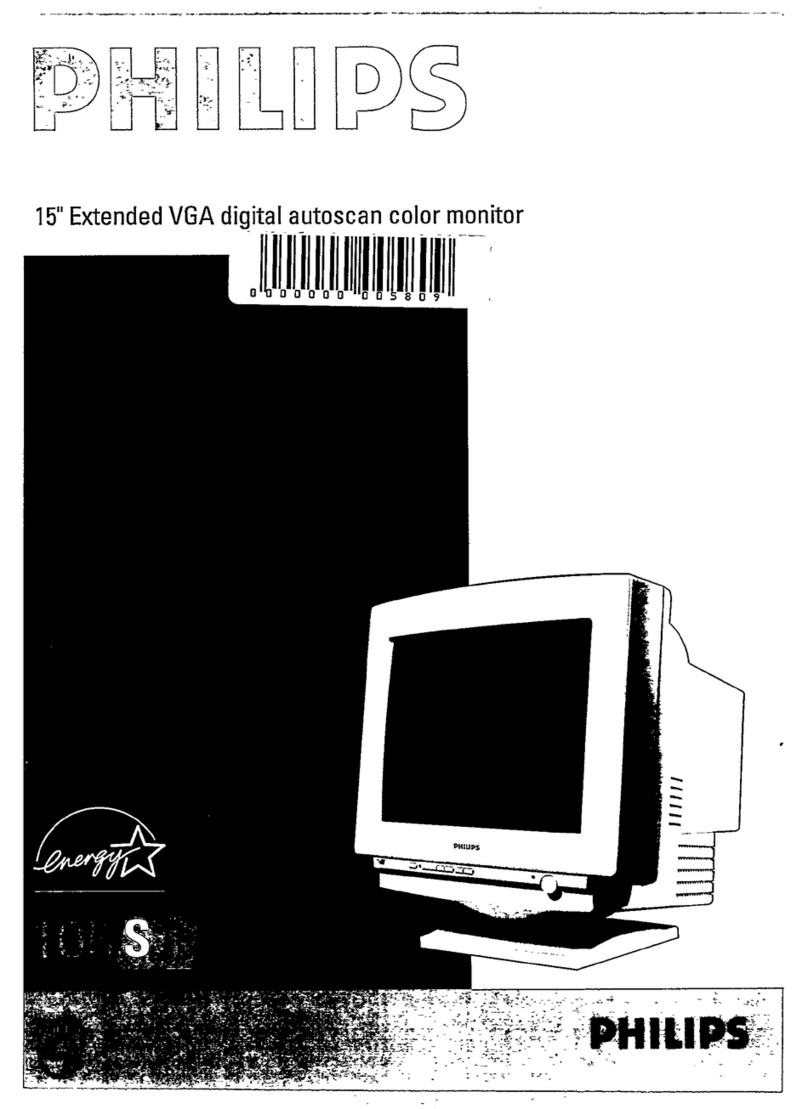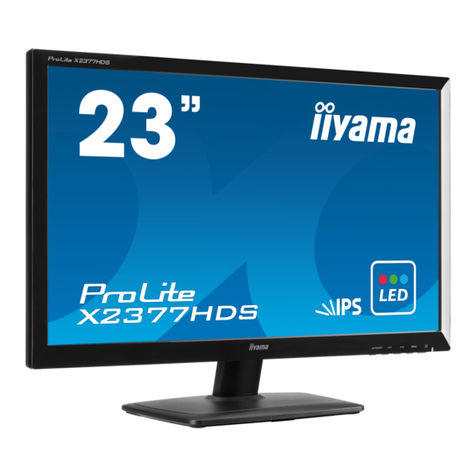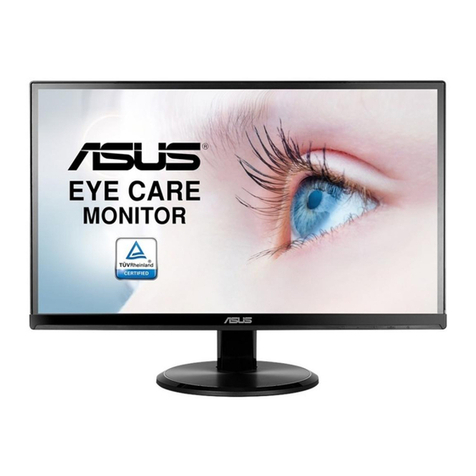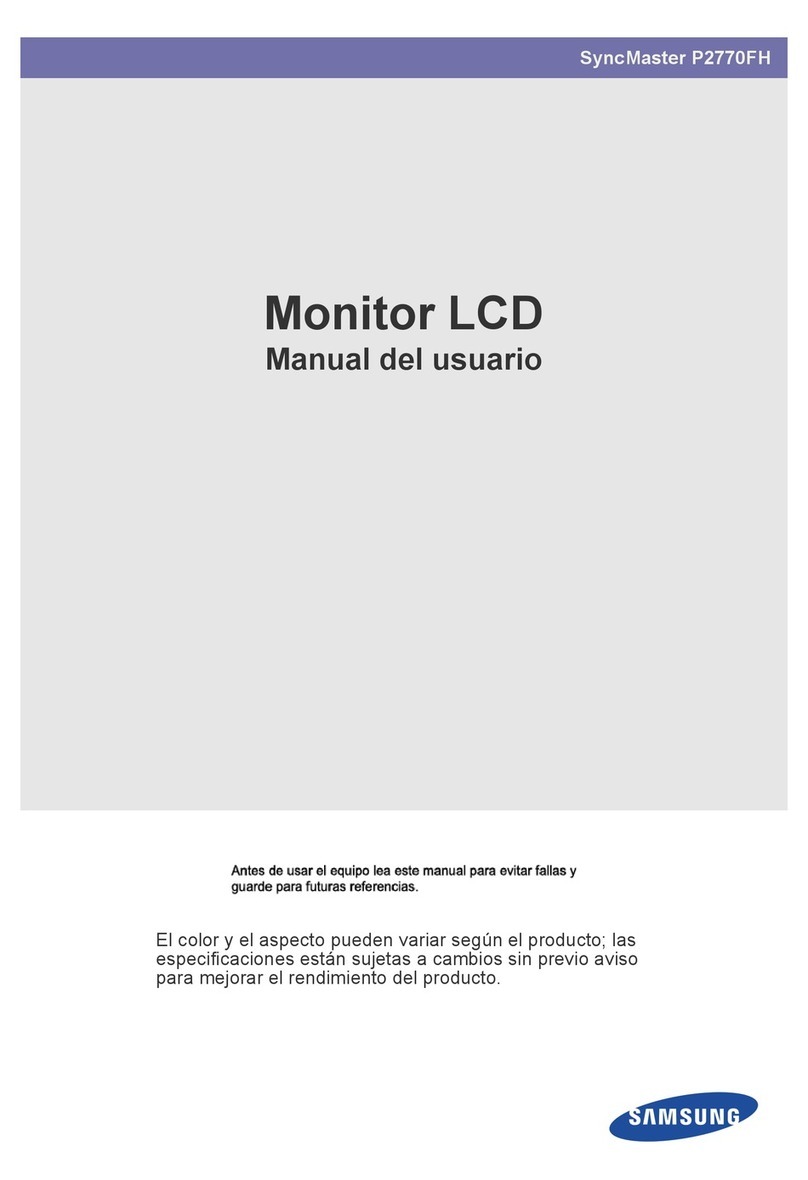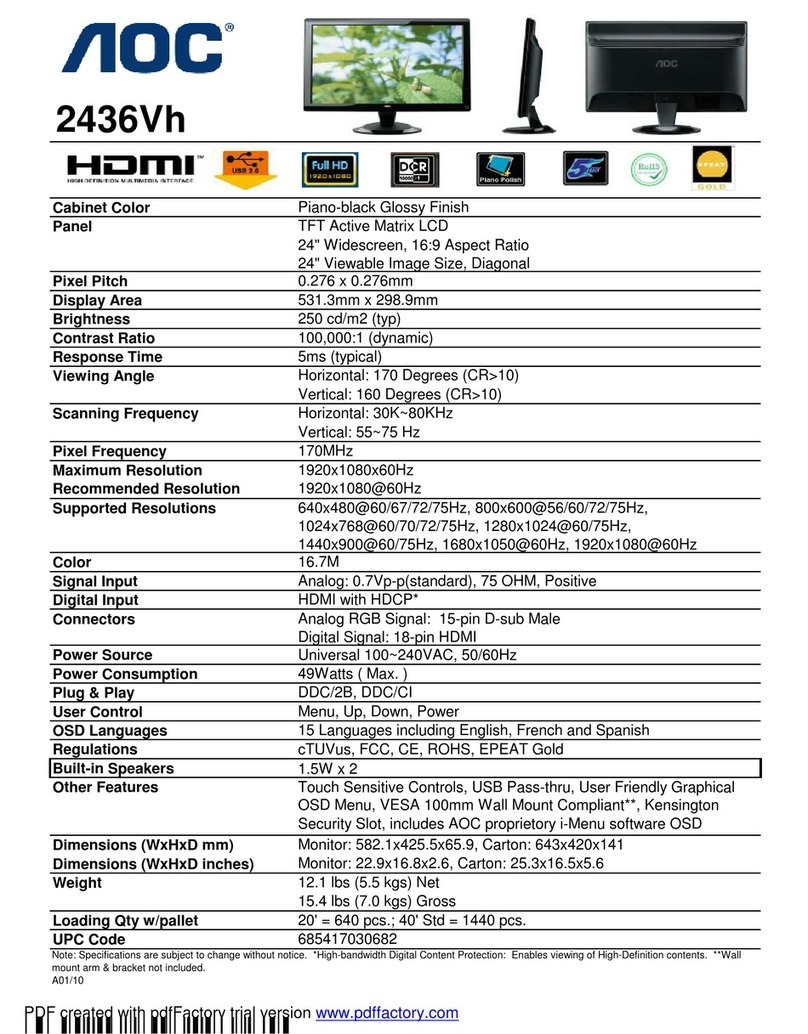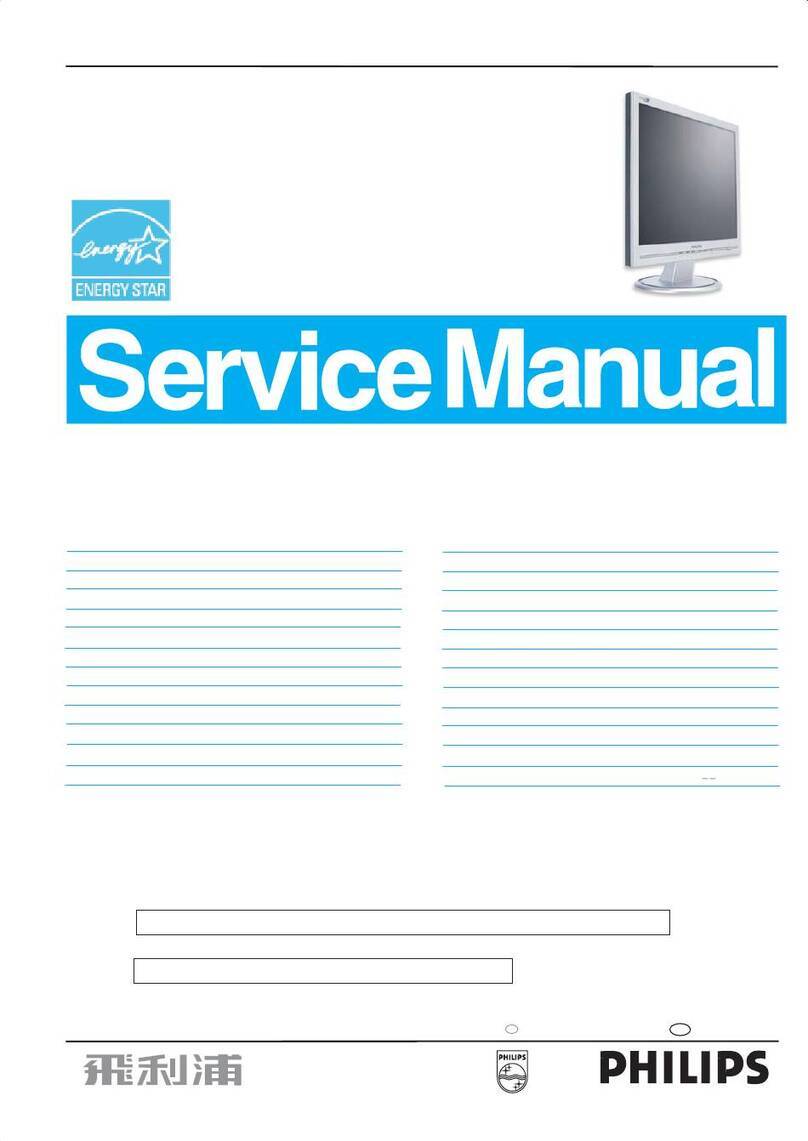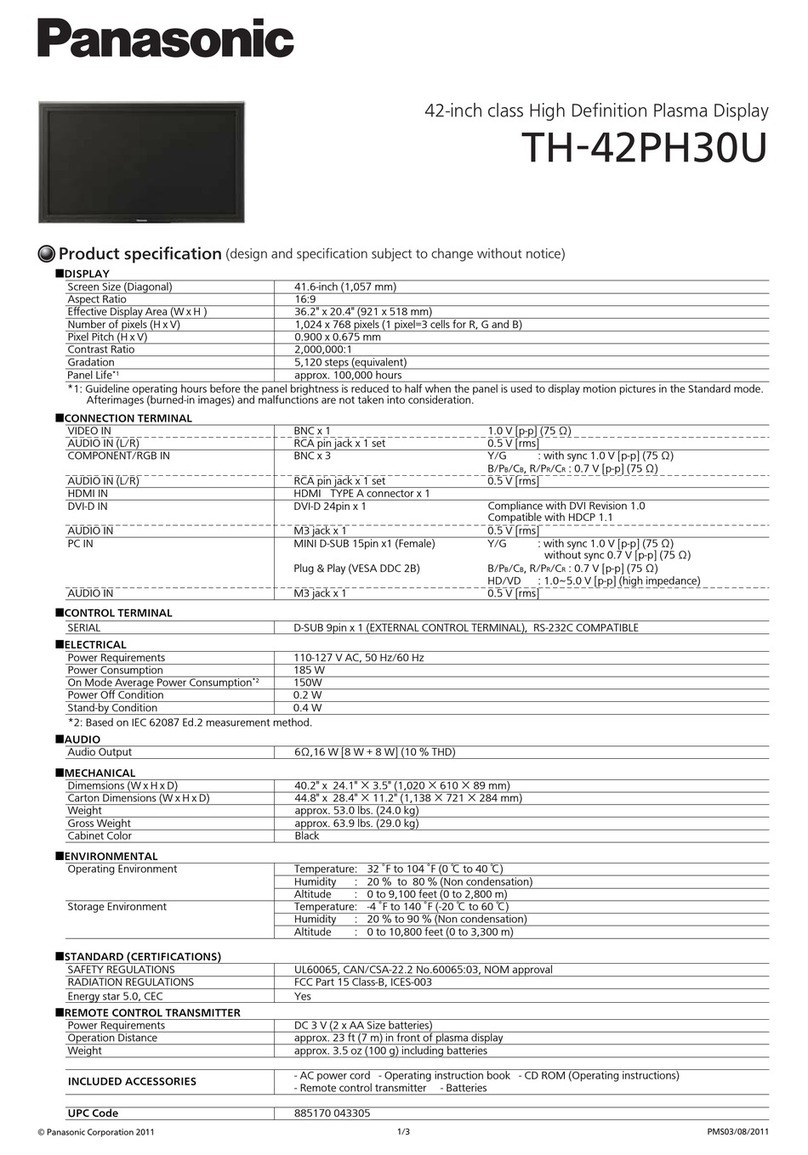Strong International RCM-10 Specification sheet

Operation and Installation Manual
RCM-10 Remote Control Monitor
®
and
RSM-10 Remote Status Monitor
®
for the CNA-100 & CNA-200 Automations
® ®
Revision 1.1 9/98


WARRANTY INFORMATION
The RCM-10 Remote Control Monitor and the RSM-10 Remote Status Monitor, sold by
® ®
STRONG INTERNATIONAL, are warranted against defects in materials and workmanship for
one year from the date of purchase. There are no other express or implied warranties and no
warranty of merchantability or fitness for a particular purpose.
During the warranty period, STRONG INTERNATIONAL will repair or, at its option, replace
components that prove to be defective, provided the unit is shipped prepaid to the manufacturer
directly or via and authorized distributor. Not covered by this warranty are defects caused by
modification, misuse or accidents and any further damage caused by inadequate packing for
service return.
STRONG INTERNATIONAL's obligation is restricted to the repair or replacement of defective
parts and under no circumstances will STRONG INTERNATIONAL be liable for any other
damage, either direct or consequential.

Information in this document is subject to change without notice. No part of this document may
be reproduced or transmitted in any form or by any means, electronic or mechanical, for any
purpose, without the express written permission of STRONG INTERNATIONAL.
© 1997, 1998 STRONG INTERNATIONAL. All rights reserved.

STRONG INTERNATIONAL Operation and Installation Manual 1
Overview
The RCM-10 Remote Control Monitor and the RSM-10 Remote Status Monitor are each a
® ®
ten-station monitor designed specifically for the theater industry. These computer-controlled
remote monitors are designed to be compatible with the STRONG CNA-100 and CNA-200
® ®
Automation System. These units allow each projection booth in a cinema multiplex to be
monitored from a central location.
This manual provides the installer and user with the necessary information to install, set up and
operate the RCM-10 and the RSM-10 remote monitors. The installer is encouraged to read all
® ®
sections of the manual before proceeding with the installation. If while installing or operating
the RCM-10 or the RSM-10 monitor you find any part of manual to be unclear or incorrect
® ®
please let us know. Call STRONG INTERNATIONAL at 402-453-4444 if help or additional
information is required.
Product Description
The RCM-10 and RSM-10 are microcomputer-controlled remote monitors designed to display
® ®
the status of all the projection booths in a cinema multiplex. The monitors are wired to the CNA
automation systems Local Synchronous Network (LSN) and can be located in various places
throughout the building such as the projection booth, managers' office and candy counter to
provide the personnel with a real time account of each movie house.
The RCM-10 and the RSM-10 monitors feature four LEDs for displaying the status of each
® ®
projection booth. Indicated are 'ready to run', projector running, timed or clock start mode, fault
and intermission. Each unit is equipped with a sonic alarm and an alarm cancel switch. The
RCM-10 monitor is different in that it features start and stop capability for each station.
The remote monitors are connected to the CNA automations via the 2-wire synchronous data bus
in a daisy-chain configuration. This eliminates the laborious wiring required by the conventional
remote stations often needing hundreds of wires and terminations.

2 Operation and Installation Manual STRONG INTERNATIONAL
Control Panel
The front panel layout incorporates ten separate control/status stations. Each contains four LEDs
to display show status. The RCM-10 has start and stop capability for each station. An alarm is
®
provided to indicate a fault condition and an alarm cancel switch to silence the alarm at the
remote station.
figure A: RCM-10 Control Panel
figure B: RSM-10 Control Panel

STRONG INTERNATIONAL Operation and Installation Manual 3
1) Power Switch
Used to turn on the remote monitor.
2) Power LED
The red power LED is on when power (120 vac/60Hz or 240 vac/50Hz) is applied to
the unit.
3) Alarm
The Alarm is sounded to indicate a fault at a CNA-100 or CNA-200. The Alarm is
sounded at all remote monitors on the Sync Loop. The alarm can be cancelled at any one of
the remotes (on the Sync Loop) or at the CNA that initiated the alarm. The alarm loudness
can be set for one of three intensities; LOW(87 dBA), MEDIUM (94 dBA) or HIGH (98
dBA) or can be disabled if desired. See Configuring the System section on page 8.
4) Alarm Cancel
This is switch is used to silence the alarm in the event of a fault. The Alarm Cancel switch
will silence the remote monitor alarm and all other remote monitor alarms on the Sync
Loop. Alarm Cancel will also cancel the alarm at the CNA Automation.
The ALARM CANCEL switch can also be used for a self-test. Press this switch for seven (7)
seconds to enter the self-test mode. The remote monitor will begin to cycle through the
LEDs lighting one at a time starting with station number 1. This testing will continue until
the switch is pushed again or a five (5) minute timer expires. Operation of the START and
STOP switches on the RCM-10 can be also be verified while in the self-test mode. Pressing
the START switch will force the AUTOSTART and RUN LEDs on. Pressing the STOP switch
will force the INTERMISSION and FAULT LEDs to light.
5) Autostart LED (yellow)
on .......... show is ready to run and is in timed or clock start mode.
off .......... show is in progress or in manual start mode.
6) Run LED (green)
on .......... projector motor is running.
blinking ...... show is ready to run or ready to resume.
off ......... show is stopped.
7) Intermission LED (yellow)
on ..........between shows.
blinking ......show is stopped not due to a fault. (This includes a programmed

4 Operation and Installation Manual STRONG INTERNATIONAL
intermission.)
off .........projector motor is running or show is stopped due to a fault.
8) Fault LED (red)
on ..........show is stopped due to a fault and alarm has been cancelled or show is
not running and failsafe does not detect the presence of film.
blinking .....show is stopped due to a fault and alarm is sounding.
off ..........fault does not exist.
9) Start switch
Press this switch to start or resume a show. (RCM-10 only)
10) Stop switch
Press this switch to stop a show or cancel a timed or clock start operation. (RCM -10
only)
The table below summarizes the eight status conditions displayed by the remote station.

STRONG INTERNATIONAL Operation and Installation Manual 5
Installation
The equipment should be carefully inspected for signs of visible damage resulting from
transportation and handling. Please notify the freight carrier immediately if damage is found.
First, verify that the power supply inside the unit is set to the same voltage (120 or 240) that is
powering the unit. If it is not, move the jumpers labeled W1 and W2 to the appropriate locations.
figure C: Power supply voltage selection

6 Operation and Installation Manual STRONG INTERNATIONAL
Mounting the Remote Monitor
The monitor is housed in a steel cabinet which is dimensioned in figure D. The four (4)
mounting holes are keyholes capable of accepting #10-24 screws with a maximum head
diameter of 3/8 inches. The cabinet is designed to be surface or flush mounted, 1/8 inch diameter
holes in each ends of cabinet are provided for wall stud mounting. Next, prepare the cabinet for
mounting by removing the desired knockouts. Several 7/8 inch knockouts are provided in the
cabinet for external wiring of power and communications. Note: optional hardware is available
for rack mounting the monitor.
figure D: Remote Monitor cabinet
Wiring the Remote Monitor
Remember that during installation insure that all requirements of the National Electric Code and
local codes are satisfied. For remote units installed in the projection booth, be sure to run clean
power (dedicated to the Remote Monitors and CNA systems only) to all Remote Monitors and
CNA automation systems from the service entrance panel or closest branch panel. The line,
neutral and ground wires should all run back to the main service panel (separate from all other
loads). It is acceptable and preferred if all remotes and automations were run from a single
distribution point.

STRONG INTERNATIONAL Operation and Installation Manual 7
IMPORTANT NOTE: Do not connect the projector motors, changeovers, xenon rectifiers or
other heavy or noisy loads to this circuit.
TB1 is the AC power input termination. This terminal block is located in the upper right corner
of the pc board. The monitor will operate on 120 or 240 vac. MAKE CERTAIN the jumpers on
the power supply are set to the correct voltage before applying power. See
figure E.
Communication wiring between the CNA automations and Remote Monitors is accomplished
using 2-conductor, twisted pair with a shield. Wire gage is dependent on the length of the wire
needed. In general, 22 gage is sufficient. Many cable manufacturers offer a broad range of 120-
ohm cables designed for RS-485 applications. We recommend Belden 9841 or equivalent. Also
be certain polarity is observed. See figure E.
figure E: Power and Communications termination

8 Operation and Installation Manual STRONG INTERNATIONAL
When planning the communication wiring, keep the cable away from equipment that generates
electrical noise, such as power conduits, fluorescent lighting fixtures, air conditioners, etc.
Choose cable routing paths in such a way to prevent damage to the cable.
The required method for communication wiring of the Remote Monitor/CNA automation system
is the daisy-chain configuration, a system in which the transmission line continues from one unit
to the next. See figure F for the daisy-chain connection topology. Do not branch or spoke
devices.
figure F: Daisy-chain connection
Emergency Stop Input
Each Remote Monitor features a master Emergency Stop input. This is designed to be wired to
the Fire Alarm System. Shorting the two inputs labeled ESTOP and ESRTN (TB2-1 and TB2-2) at
any Remote Monitior will force a stop condition to all CNA systems on the network. The
connection should be made to a normally open dry relay contact as shown in figure G.
figure G: Emergency Stop wiring

STRONG INTERNATIONAL Operation and Installation Manual 9
Configuring the System
The synchronous communications network can support up to 64 devices (Remote Monitors,
CNA-100S, CNA-200s and a Host). Remote Monitors and CNAs will each require a unique
ID number. ID 0 will be used by the Host PC, IDs 32 to 63 are assigned to Remote Monitors as
necessary and IDs 1 to 63 are assigned to CNAs as necessary. Normally the CNA’s ID numbers
will be assigned starting at 1. The Remote Monitor's IDs should be assigned to the higher
numbers starting at 63 and working down. Note that as many Remote Monitors can be assigned
to a sync loop number as desired (switches and LEDs all will work in parallel). Figure H below
demonstrates the Sync Loops and IDs within a network.
figure H: Sync Loop and ID numbers in a network
Within the Sync network, a maximum of 20 sync loops can be defined. The CNA uses sync
loops to run projection systems in interlock. The legal range of CNA sync loop numbers are 1
through 20. For large multiplexes that want to monitor more than ten CNAs on the network, up
to six Remote Monitors can be grouped together to monitor up to fifty-seven (57) houses with
one group of three Remote Monitors. Remember, the maximum number of devices that can be
connected to the Sync network at one time is 64 and one is the Host PC. For very large
multiplexes it may be practical to divide the network into two smaller networks. Call the factory
for suggestions on planning the wiring in a large multiplex.
Sync loop numbers 21 through 26 are predefined and used for Remote Monitors.

10 Operation and Installation Manual STRONG INTERNATIONAL
Remote Monitor setup
First locate the eight position DIP switch designated SW1. See figure I .
figure I: DIP switch
To configure the Remote Monitors for Loop number the DIP switches SW1-1 through SW1-3 must
be set as follows:
Remote Monitor Sync Loop Remote Monitor
CNA’s at ID Number DIP switch setting
SW1-1 SW1-2 SW1-3
1 to 10 21 OFF OFF
OFF
11 to 20 22 OFF OFF ON
21 to 30 23 OFF ON OFF
31 to 40 24 OFF ON ON
41 to 50 25 ON OFF OFF
51 to 60 26 ON OFF ON

STRONG INTERNATIONAL Operation and Installation Manual 11
To configure the Remote Monitors for ID number the DIP switches SW-4 through SW-8 must be
set as follows:
Sync ID Remote Monitor DIP switch setting
Number SW1-4 SW1-5 SW1-6 SW1-7 SW1-8
63 ON ON ON ON ON
62 ON ON ON ON OFF
61 ON ON ON OFF ON
60 ON ON ON OFF OFF
59 ON ON OFF ON ON
58 ON ON OFF ON OFF
57 ON ON OFF OFF ON
56 ON ON OFF OFF OFF
55 ON OFF ON ON ON
54 ON OFF ON ON OFF
53 ON OFF ON OFF ON
52 ON OFF ON OFF OFF
51 ON OFF OFF ON ON
50 ON OFF OFF ON OFF
49 ON OFF OFF OFF ON
48 ON OFF OFF OFF OFF
47 OFF ON ON ON ON
46 OFF ON ON ON OFF
45 OFF ON ON OFF ON
44 OFF ON ON OFF OFF
43 OFF ON OFF ON ON
42 OFF ON OFF ON OFF
41 OFF ON OFF OFF ON
40 OFF ON OFF OFF OFF
39 OFF OFF ON ON ON
38 OFF OFF ON ON OFF
37 OFF OFF ON OFF ON
36 OFF OFF ON OFF OFF
35 OFF OFF OFF ON ON
34 OFF OFF OFF ON OFF
33 OFF OFF OFF OFF ON
32 OFF OFF OFF OFF OFF

12 Operation and Installation Manual STRONG INTERNATIONAL
Alarm loudness setting
The alarm loudness can be set for one of three intensities; LOW(87 dBA), MEDIUM (94 dBA)
or HIGH (98 dBA) or can be disabled if desired. See figure J below.
figure J: Alarm setting
Final checkout and operation
When the electrical installation is completed and the all CNA-200s and Remote Monitors are
correctly configured, power up all devices on the network. Follow the steps outlined below to
verify proper operation.
1. Check the Local Sync Network Status screen on each CNA-200 to determine that all CNA-200s
and Remote Monitor IDs are displayed.
2. Check each Remote Monitor. The power LED should be lit. At least one of the LEDs should
be lit on each active station. If the film is not loaded at the CNA-200 the INTERMISSION LED
should be on. Refer to the Control Panel section on page 3 and 4 for a description of the
status LEDs.
3. Take each CNA-200 through a dummy run and verify the status LEDs on all Remote
Monitors.
4. If using the RCM-10 Remote Control Monitor, verify that the START and STOP switches are
®
working at each station.

STRONG INTERNATIONAL Operation and Installation Manual 13
Troubleshooting with the Remote Monitor
The red LED labeled LED 1 on the mainboard is a communications status indicator. The LED
will either be blinking at a fast rate (on 3 times per second), a slow rate (on 1 time per second) or
off. This status LED can provide much information and will aid in troubleshooting the Remote
Monitor and the network.
The following table shows the three modes of LED status and the conditions that may exist. This
table assumes you have attempted to wire the network.
(1) Fast Blinking Rate - Monitor OK. Communications OK.
1. The Remote Monitor is working and is communicating properly with CNA-200(s).
(2) Slow Blinking Rate - Monitor OK, but not communicating with CNA-200(s).
1. Data (+) and Data (-) are open.
2. Data (+) and Data (-) are shorted together.
3. CNA-200s connected to the network are not powered up.
4. The ID number is set the same somewhere else on the network.
(3) Off - Monitor maybe OK. Communcations not OK.
1. Only Data (+) is open.
2. Only Data (-) is open.
3. Data (+) is shorted to shield.
4. Data (-) is shorted to shield.
5. Data (-), Data (+) or shield are cross wired.
6. ID number is set to zero (0).
7. The Remote Monitor is not working.
If there are no LEDs lit on the front panel (except for the power LED), the possible causes are:
1. The Sync Loop number is not set correctly.
2. CNA-200s connected to the network are not on.
3. Data (+) and/or Data (-) are open.
4. Data (+) and Data (-) are shorted together.
5. Data (+) and/or Data (-) are shorted to shield.
6. Data (-), Data (+) or shield are cross wired.
7. The Remote Monitor is not working.
8. ID number is set to zero (0).

14 Operation and Installation Manual STRONG INTERNATIONAL
System Specifications
General:
Power requirements 8.5 watts (maximum)
Power Supply Voltage 90-130 VAC or 180-260 VAC
(user selectable) 50-60 Hz single phase
Input Power Fuse 1/2 amps 3AG normal blow
(LITTLEFUSE #312.500 or equivalent)
Dimensions width ...12-1/2 in. (31.8 cm)
height ...5-1/2 in. (13.9 cm)
depth ...3 in. (7.6 cm)
Weight 4.6 lbs (2.1 kg)

STRONG INTERNATIONAL Operation and Installation Manual 15
Communication:
RS485
Half duplex
Protocol: SCIBEK (Bit-oriented protocol developed by TL Industries for the theatre industry)
Troubleshooting
PROBLEM: A Remote Monitor is missing from the status overview display on all CPA-10s.
CHECKS: Is the power LED on at the Remote Monitor?
Are any other LEDs on the front panel working?
Remove the control panel and check the DIP switch configuration at the Remote
Monitor to be sure sync ID and sync loop numbers are correct (Refer to
Configuring the System section on pages 7 and 8).
Be sure the STATUS LED on the pc board is blinking.
If the Remote Monitor is at the end of a transmission line are the "DATA +" and
"DATA -" wires reversed or not connected?
This manual suits for next models
3
Table of contents

